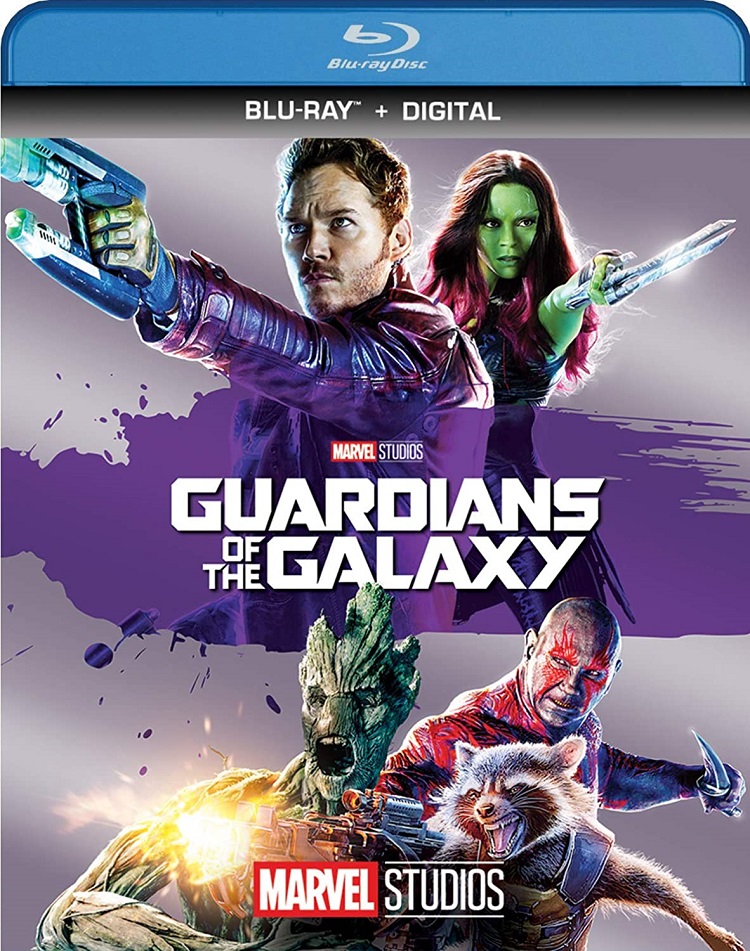
The executives and filmmakers at Marvel Studios have made an impressive impact on both the world of pop culture and the business of Hollywood. Superheroes have become more prominent across the media landscape and other studios are trying to create shared universes with their properties. For example, Warner Brothers with DC Comics characters, and Universal with classic movie monsters.
Marvel took their biggest risk to date with this summer’s Guardians of the Galaxy, a space adventure featuring an obscure group of characters starring Chris Pratt, a sitcom second banana in the lead. With James Gunn at the helm as director/co-writer, they achieved their third highest-grossing film to date, the second highest-grossing film of 2014, and arguably their most entertaining.
The film opens in 1988 with the introduction of a young boy named Peter Quill. On the day his mother dies in a hospital, he is abducted by Yondu (Michael Rooker), leader of a group of aliens known as the Ravagers. Twenty-six years later, Peter (Chris Pratt) is trying to make a name for himself in the universe as an outlaw named Star-Lord. In the opening sequence, reminiscent of Raiders of the Lost Ark, the somber tone of the film changes as Peter reveals himself to be a bit of a goofball with a love for ’70s pop songs.
Peter steals an orb Yondu had been contracted to get and heads to the planet Xandar to sell it. Due to his double cross, Yondu places a bounty on Peter, which comes to the attention of the bounty-hunting team of Rocket, a genetically manipulated raccoon, and Groot, a plant creature. Both are CGI creations, voiced by Bradley Cooper and Vin Diesel respectively, and as a testament to their talents as actors and the quality of the screenplay, Rocket and Groot are the two most beloved characters of the film. Also seeking the orb is the villainous Kree warlord Ronan the Accuser (Lee Pace), who wants to use the powerful weapon inside, an Infinity Stone, to destroy the Xandarians. He sends Gamora (Zoe Saldana), a highly trained assassin after Peter, but she doesn’t want Ronan to get the weapon.
The foursome fights with one another, but the authorities apprehend them. While locked up in a prison, they encounter Drax the Destroyer (Dave Bautista), whose family was killed by Ronan. Although they all mistrust each other, the five must work together and be willing to make sacrifices in order to succeed at stopping Ronan.
The video has been given a 1080p/AVC-MPEG-4 encoded transfer displayed in the film’s original theatrical aspect ratio of 2.40:1. The wide spectrum of colors used in the production design come through in vibrant hues. Blacks are inky without crushing. The scenes offer great texture detail, but never compromise the visual effects work to create Rocket and Groot.
The audio is available in an immersive DTS-HD Master Audio 7.1 track. Dialogue is always clear. Characters, objects, and ambient sounds are well placed and move through the channels. The score and songs come through with excellent clarity. The LFE delivers deep, booming bass that occasionally rattles the speakers
The Bonus Features include an Audio Commentary with Director James Gunn, who is the biggest fan of the film and the people he worked with. Under the Featurettes menu, “Guide to the Galaxy with James Gunn” (HD, 21 min) is a servicable making-of but I want the phony 8-bit game they use to link different segments; “The Intergalactic Visual Effects for Guradians” (HD, 6 min) focuses on Rocket and Groot; and “Exclusive Look at Marvel’s Avengers: Age of Ultron” (2 min) offers a tease and little else. Also, there are five “Deleted & Extended Scenes” (HD, 4 min) with optional commentary from Gunn, and the standard “Gag Reel” (HD, 4 min).
Guardians of the Galaxy is a highly entertaining blockbuster filled with action and humor. While the story is simple and the motivation of the villains utterly unclear, the film succeeds primarily because the audience becomes invested in its main characters, who are all set to return for at least one sequel.